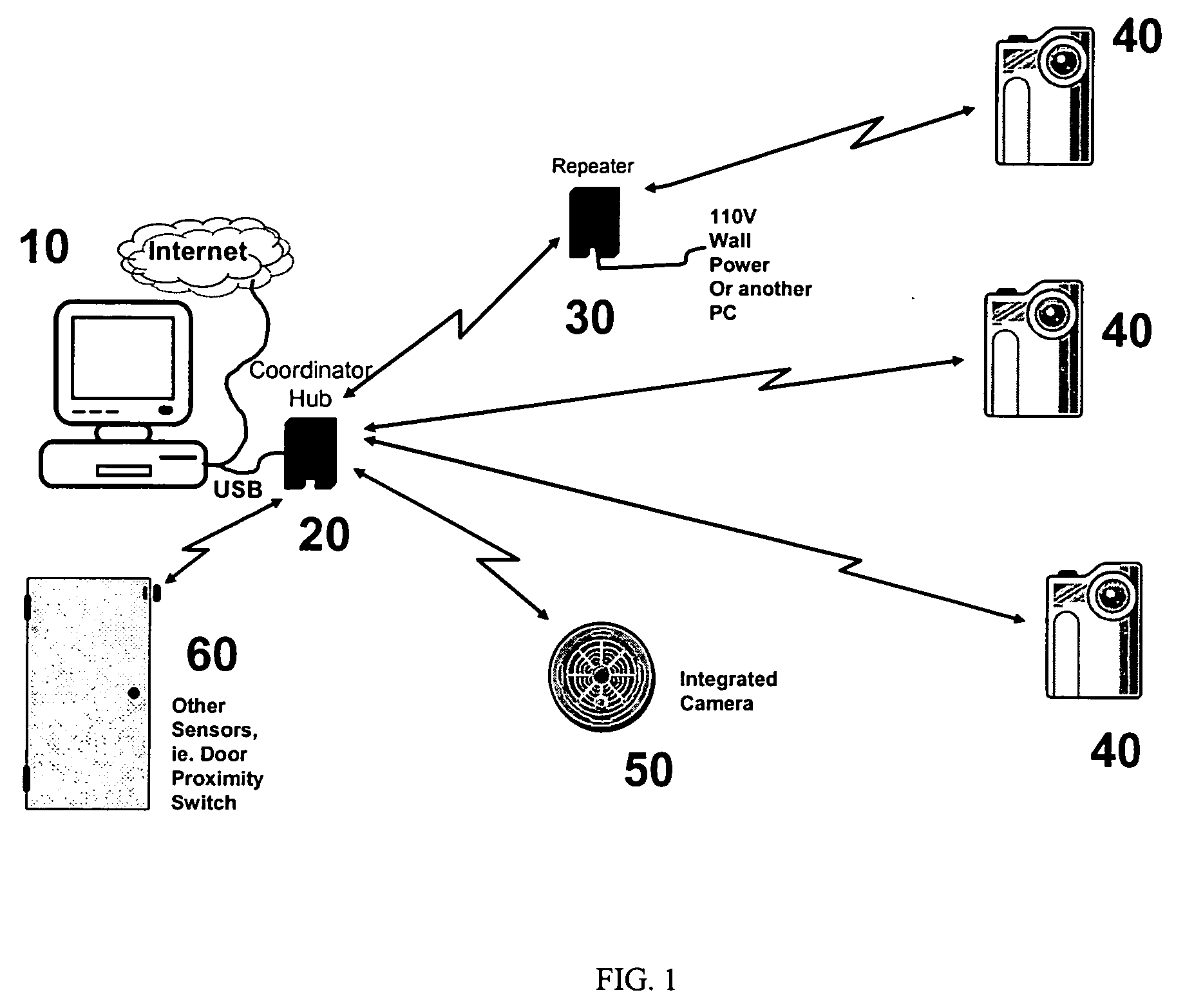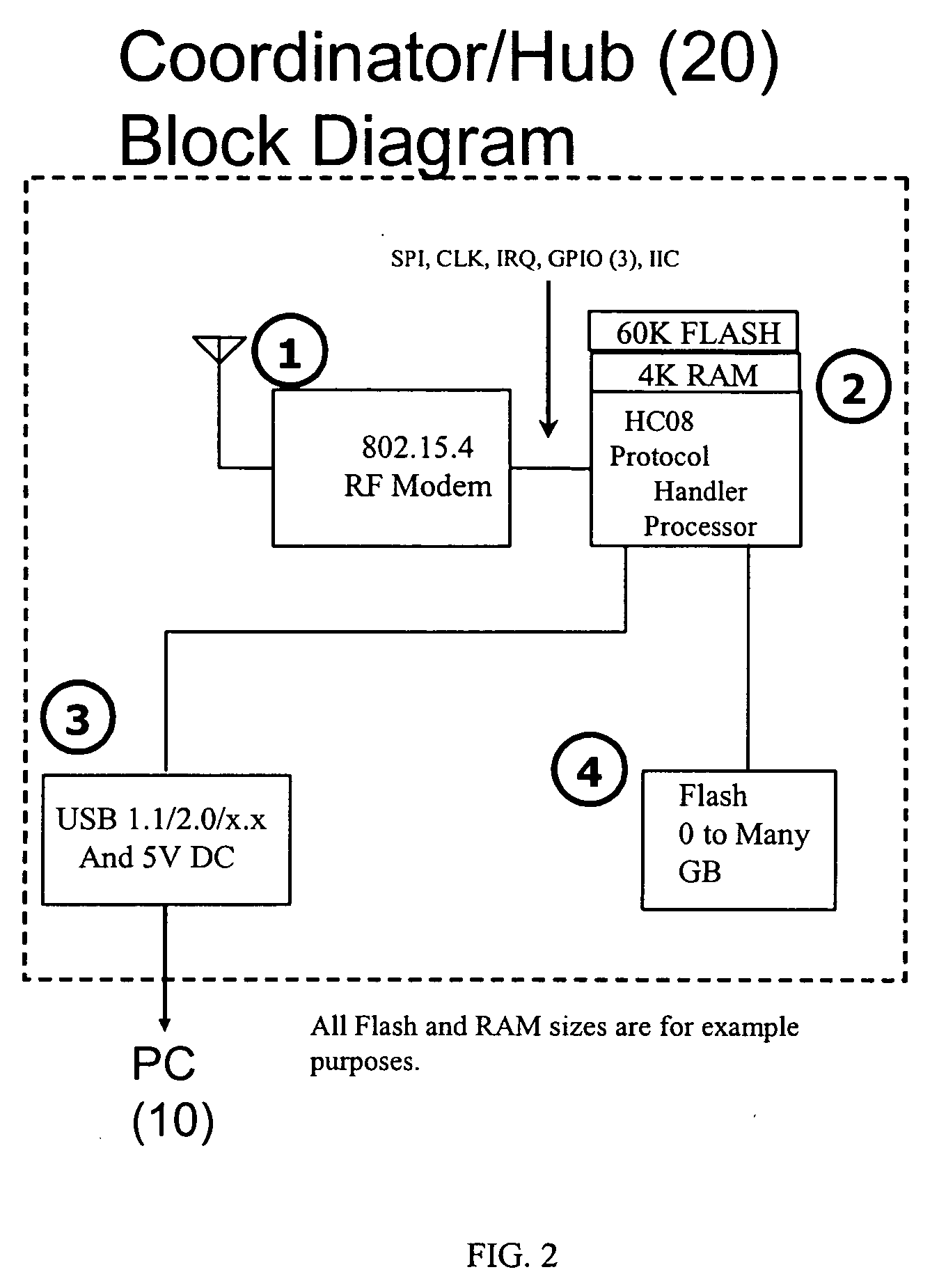System and method for communicating over an 802.15.4 network
a communication system and network technology, applied in the field of data communication, to achieve the effect of simple setup and maintenance, low power, and flexibility of placemen
- Summary
- Abstract
- Description
- Claims
- Application Information
AI Technical Summary
Benefits of technology
Problems solved by technology
Method used
Image
Examples
Embodiment Construction
[0025]FIG. 1 depicts an exemplary embodiment of an 802.15.4 network according to the present invention. The basic system operates via the interaction of several components as shown in FIG. 1. In the basic setup, a computer 10 such as a personal computer (PC) with some control software requests an image from the system. The request could be for an image from one or multiple cameras within the network. The request may be based on a particular time period that has passed, or may be based on a triggering event (such as a door opening and triggering a sensor). The request is first directed to the Coordinator or Hub 20, which is attached to the computer via, perhaps, a USB connection. The Coordinator is built using an 802.15.4 Low Power RF Radio. The Hub 20 then communicates using a low-power RF protocol with the appropriate Repeaters 30 and Camera End Nodes 40 to acquire the image. The Repeaters may be fabricated using an 802.15.4 Low Power RF Radio. End Node Cameras may come in many for...
PUM
 Login to View More
Login to View More Abstract
Description
Claims
Application Information
 Login to View More
Login to View More - R&D
- Intellectual Property
- Life Sciences
- Materials
- Tech Scout
- Unparalleled Data Quality
- Higher Quality Content
- 60% Fewer Hallucinations
Browse by: Latest US Patents, China's latest patents, Technical Efficacy Thesaurus, Application Domain, Technology Topic, Popular Technical Reports.
© 2025 PatSnap. All rights reserved.Legal|Privacy policy|Modern Slavery Act Transparency Statement|Sitemap|About US| Contact US: help@patsnap.com



